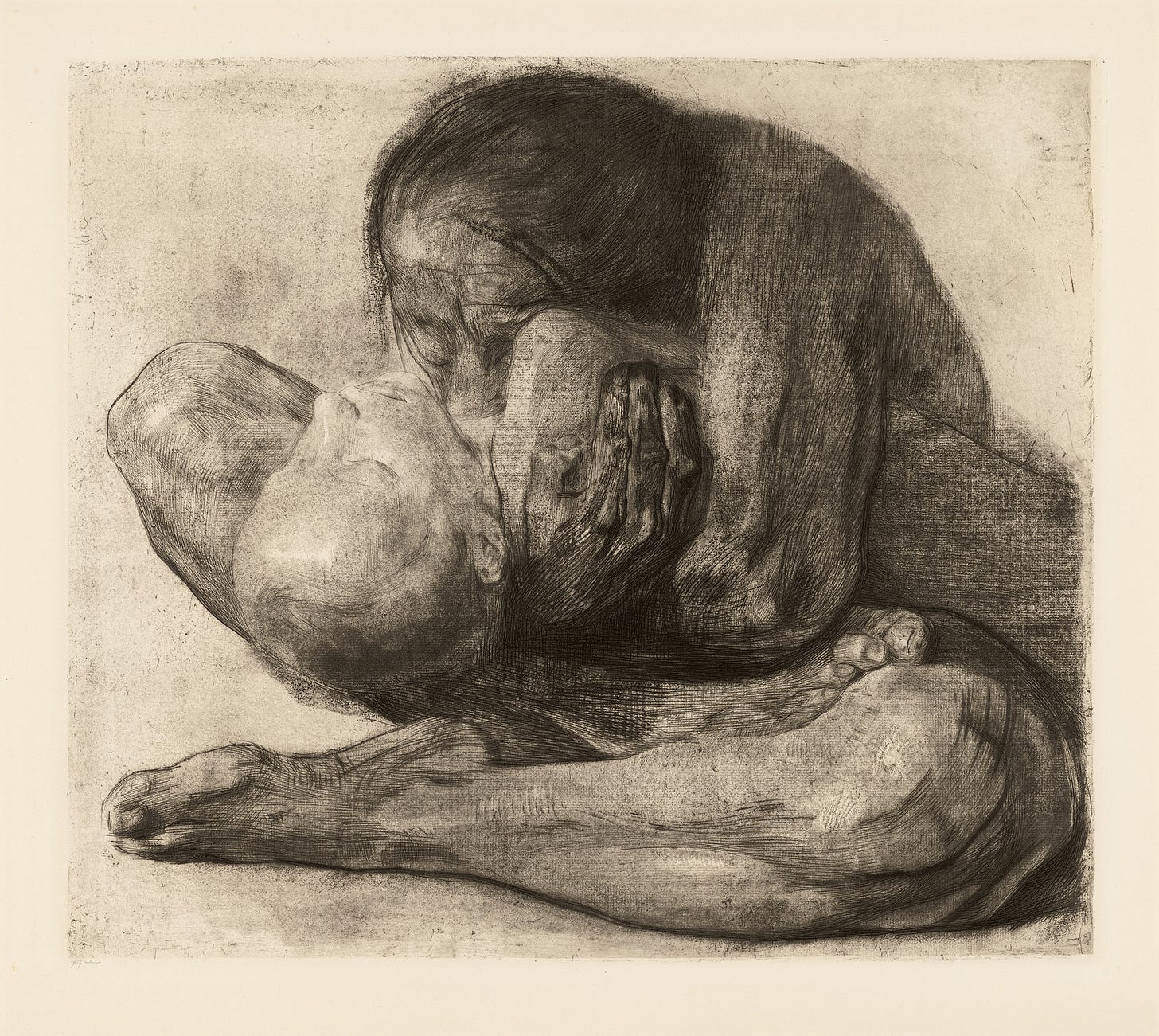Käthe Kollwitz once wrote: "I agree with my art serving a purpose in my life.". It is this purpose, which exposesthe worst of the human experience, that is displayed in Käthe Kollwitz's (1867- 1945) work, throughout her entire life.
Käthe Kollwitz, a pioneering German Expressionist artist and advocate of social justice, had an unwavering commitment to portraying the suffering of the working class, the insular world of women, and the devastating impacts of war, particularly on women and children.
“When he was seven years old and I was working on the etching ›Woman with dead Child‹, I did a drawing of myself, holding him on my arm, in front of the mirror. That was very exhausting and I groaned. Then he said in his little child’s voice: Stop groaning, mum, it is going to be very beautiful…” Arthur Bonus, Das Käthe-Kollwitz-Werk, 1925
In 1903, Kollwitz made one of the most shocking images, in my opinion, in the history of art. This is the etching Woman with Dead Child, a powerful and haunting artwork that depicts the grief of a mother over the loss of her child. Kollwitz uses dark, muted colours along with rough, expressive brushstrokes so as to create an impression of raw emotion and pain in her work. The distorted and almost skeletal bodies, emphasise the physical and emotional toll that sorrow can take on a person. The mother's body language is so visceral, clutching closely to her dead child, her head buried in its body, that you can almost hear her wail.
The emotional honesty that characterises Kollwitz's work allows the viewers to sense the universal human experience of loss and grief. It is this collective experience that makes her work so significant and relevant today.
In 1914, shortly after the outbreak of World War I, Kollwitz’s son Peter volunteered for the German army and was quickly killed on a battlefield in Belgium. The loss of a child, already a focal point in Kollwitz's work, took on added meaning as she returned to the subject in her later work.




